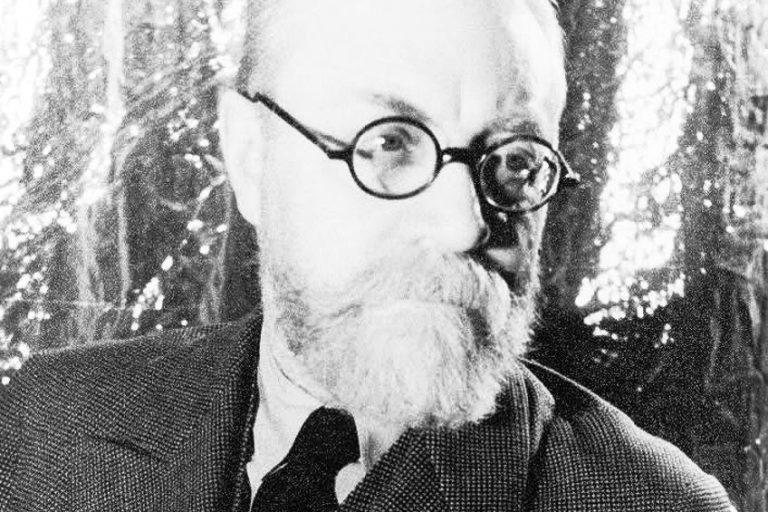“Mountains and Sea” by Helen Frankenthaler – A Masterpiece
Mountains and Sea, created by Helen Frankenthaler in 1952, is a landmark painting in the history of Abstract Expressionism and Color Field painting. Renowned for its innovative use of the soak-stain technique, this seminal work showcases Frankenthaler’s ability to merge spontaneity with controlled composition. Inspired by the landscapes of Nova Scotia, Mountains and Sea features ethereal washes of color that evoke a sense of fluidity and openness, marking a departure from the more gestural approach of her contemporaries. This painting not only established Frankenthaler’s unique artistic voice but also influenced subsequent generations of artists, including Morris Louis and Kenneth Noland, who embraced her technique to push the boundaries of abstract art.
Key Takeaways
- Mountains and Sea is a pivotal 1952 painting by Helen Frankenthaler, shaping the direction of abstract expressionism.
- Frankenthaler employed a distinctive soak-stain technique, pouring thinned oil paints onto canvas, which influenced the Color Field movement.
- Despite initial critiques, the painting is now regarded as a cornerstone of Frankenthaler’s oeuvre and post-war American art.
The Artist and Her Influence
| Artist | Helen Frankenthaler (1928 – 2011) |
| Date Created | 1952 |
| Medium | Oil and charcoal on canvas |
| Genre | Abstract Expressionism |
| Period/Movement | Abstract Expressionism, Color Field painting, and Lyrical Abstraction |
| Dimensions (cm) | 220 x 297.8 |
| Series/Versions | Single artwork |
| Where Is It Housed? | National Gallery of Art, Washington, D.C., United States |
| What It Is Worth | Estimated over $5 million (based on recent market trends and auction results for Frankenthaler’s works) |
Mountains and Sea is a seminal work by the American abstract expressionist Helen Frankenthaler. Created in 1952, the painting marks a pivotal moment in Frankenthaler’s career, showcasing her innovative approach to color and form. At the young age of 23, Frankenthaler produced what would become one of her most celebrated pieces, despite initial criticism from the art world. The work stands as a testament to her role in the development of post-war American art, particularly in the evolution of abstract expressionism.
Helen Frankenthaler’s technique in Mountains and Sea involved pouring thinned oil paints onto an unprimed canvas, a method inspired by Jackson Pollock but distinct in its use of oil paints mixed with turpentine. This enabled the pigment to soak into the canvas, creating a stained effect that became a hallmark of her artistic style. The painting’s large scale, measuring approximately 220 x 297.8 cm, and its rendering of color and space exemplify Frankenthaler’s contribution to the Color Field movement. Though initially underestimated, Mountains and Sea would exert a profound influence on a generation of artists and establish Frankenthaler’s enduring legacy.
Contribution to Abstract Expressionism
Frankenthaler, an American abstract expressionist painter, emerged in the early 1950s as a pivotal figure in the post-World War II art movement. She was deeply influenced by major artists such as Jackson Pollock and Arshile Gorky. Her work is often celebrated for its contribution in transitioning from Abstract Expressionism to Color Field painting.
Morris Louis and Kenneth Noland were among the artists influenced by Frankenthaler’s expansive color-soaked canvases, which continued to redefine the boundaries and possibilities of abstract painting.
Innovations in Unprimed Canvas
Frankenthaler’s Mountains and Sea stands as a testament to her innovative use of unprimed canvas, a striking departure from the heavily textured applications of paint utilized by many of her contemporaries. Employing a technique known as “soak-stain,” she thinned her oils, allowing them to seep into the fabric of the canvas, creating diaphanous layers of color. This represented a significant breakthrough in the use of mediums and materials, setting her apart from her peers and forecasting a new trajectory for modern American art.
Masterpiece Dissected: Mountains and Sea
In 1952, Helen Frankenthaler created Mountains and Sea, a watershed painting that not only marked a pivotal moment in her career but also introduced the revolutionary stain technique to the art world.
Creation and Method
Mountains and Sea was born from Helen Frankenthaler’s synthesis of nature-inspired abstraction. The painting is a large canvas and challenges traditional expectations of a landscape. Frankenthaler’s method involved laying the unprimed canvas flat on the floor, allowing her to approach it from all sides and imbue the work with a dynamic quality.
Instead of using brushes and easels, she poured and brushed oil paint mixed with turpentine directly onto the canvas, creating a fusion of color and texture that resonated with organic forms and the fluidity of nature.
Stain Technique Innovations
Frankenthaler’s innovative stain technique redefined the application of oil paint. This method—a hallmark of Color Field Painting—involved diluting oil paints so that they would stain the unprepared canvas, seeping into the fabric rather than sitting on top of it, much like watercolor. This interplay of paint and canvas structure resulted in a velvety expanse of color, which was both her canvas’s ground and its gestural flourishes. Through the stain technique, Frankenthaler emphasized the flatness of the canvas while creating a sense of depth with translucent layers of color.
The charcoal lines on Mountains and Sea trace the spontaneous journey of the artist’s hand, providing structure to the otherwise ethereal areas of color.
These lines suggest forms and contours, proposing a loose interpretation of a landscape without being prescriptive. Using this method, Frankenthaler moved the conversation of abstract painting towards exploring the essence of shapes and forms, provoking viewers to consider pure color and abstraction in new and complex ways.
Artistic Mediums and Techniques
Helen Frankenthaler developed a unique approach to abstract painting with her work Mountains and Sea. This piece showcases her pioneering soak-stain technique, where she utilized thinned-down oils rather than traditional impasto styles.
- Technique: The soak-stain technique involves pouring turpentine-diluted oil paint onto raw, unprimed canvas. This method creates diaphanous color effects, which appear to float against the canvas backdrop.
- Canvas and weave: The weave of the unprimed canvas plays an integral part, as it absorbs the paint and becomes a visible element of the artwork. This interaction emphasizes the flatness of the surface while engaging with the medium’s materiality.
- Colors: The colors in Mountains and Sea are applied in a way that they interact subtly with each other, creating a sense of depth and layered complexity.
- Additional materials: Frankenthaler often supplemented her technique with charcoal lines to juxtapose the fluidity of the stain. She also explored the use of paper in other works, experimenting with the soak-stain method across different mediums.

Frankenthaler’s approach in Mountains and Sea was innovative, rejecting the gestural brushwork of her predecessors. Her adaptation of the soak-stain method has greatly influenced subsequent generations of artists.
Visual Analysis of Mountains and Sea
The artwork Mountains and Sea by Helen Frankenthaler is notable for its pioneering soak-stain technique and abstract representation. The painting melds color, form, and texture to capture the essence of a seascape.
Subject Matter
Mountains and Sea is abstract, drawing inspiration from the landscapes of Nova Scotia. Frankenthaler does not depict the scene literally but rather evokes the feeling of the place through a blend of shapes and hues that suggest, rather than define, natural elements like land, sea, and sky.
Use of Color and Form
In Mountains and Sea, color is not just an element of representation but also a tool of expression. Frankenthaler employs a palette of cool blues and greens punctuated by warmer pinks and oranges, mimicking the interplay between land, water, and sunlight. The forms are fluid and open-ended, enabling the viewer’s eye to flow across the canvas as seamlessly as the poured paint itself.
The Role of Texture
The texture in Mountains and Sea is subtle yet critical to its impact. Frankenthaler used unprimed canvas, allowing the thinned oil paints to soak into the fabric. This creates a variety of textures as the pigments bleed and merge, suggesting depth and contributing to the overall sense of spatial ambiguity within the painting.
Exhibition and Legacy
Helen Frankenthaler’s Mountains and Sea has an influential presence in art institutions and continues to inspire through the work of the Helen Frankenthaler Foundation.

Display in Prominent Institutions
National Gallery of Art, located in Washington, D.C., holds Mountains and Sea in its collection. The painting was created in 1952 and after its first exhibition, it faced criticism; however, with time, it has become celebrated for its pioneering technique and emotional depth.
It is not merely displayed; it resides there, signifying its integral role in American art history and the influence it continues to wield in abstract expressionism.
Formation of the Helen Frankenthaler Foundation
The Helen Frankenthaler Foundation was established to honor Frankenthaler’s contribution to modern art and to manage her legacy within the United States and beyond. It ensures that her groundbreaking work, including Mountains and Sea, remains accessible and influential in the art community. The foundation supports a variety of initiatives, from exhibitions to educational programs, upholding Frankenthaler’s artistic spirit and inspiring new generations of artists and art lovers.

Helen Frankenthaler’s Mountains and Sea stands as a pivotal work in the evolution of mid-20th century American art. Its innovative use of the soak-stain technique not only distinguished Frankenthaler as a pioneering artist but also helped shape the trajectory of Color Field painting. The ethereal and expansive quality of Mountains and Sea captures the essence of Frankenthaler’s vision, blending spontaneity with deliberate composition. This masterpiece continues to be celebrated for its influence on the abstract art movement and its enduring ability to inspire artists and viewers alike with its sublime interpretation of natural landscapes.
Frequently Asked Questions
What Artistic Technique Did Helen Frankenthaler Employ in Creating Mountains and Sea?
Helen Frankenthaler utilized the soak-stain technique in Mountains and Sea, where she poured thinned oil paints directly onto an unprimed canvas, allowing the colors to soak in and create a watercolor-like effect. This innovative approach led to the birth of the Color Field movement, distinguishing Frankenthaler’s work in the realm of abstract expressionism.
What Is the Historical Context Surrounding the Creation of Mountains and Sea?
Painted in 1952, Mountains and Sea marked a significant moment in Helen Frankenthaler’s career at just 23 years old and laid the groundwork for the subsequent Color Field movement. Despite initial criticism, this piece set the stage for a departure from more traditional painting methods and became one of Frankenthaler’s most influential works.
What Critical Interpretations Have Been Made About Mountains and Sea?
Critics have often discussed Mountains and Sea as a revolutionary work that defied conventional categorizations of abstract art by blending color and form to create a sense of depth and space. It is frequently analyzed in terms of its emotional impact and considered a testament to Frankenthaler’s ability to convey profound experiences through her abstract visual language.
Isabella studied at the University of Cape Town in South Africa and graduated with a Bachelor of Arts majoring in English Literature & Language and Psychology. Throughout her undergraduate years, she took Art History as an additional subject and absolutely loved it. Building on from her art history knowledge that began in high school, art has always been a particular area of fascination for her. From learning about artworks previously unknown to her, or sharpening her existing understanding of specific works, the ability to continue learning within this interesting sphere excites her greatly.
Her focal points of interest in art history encompass profiling specific artists and art movements, as it is these areas where she is able to really dig deep into the rich narrative of the art world. Additionally, she particularly enjoys exploring the different artistic styles of the 20th century, as well as the important impact that female artists have had on the development of art history.
Learn more about Isabella Meyer and the Art in Context Team.
Cite this Article
Isabella, Meyer, ““Mountains and Sea” by Helen Frankenthaler – A Masterpiece.” Art in Context. May 30, 2024. URL: https://artincontext.org/mountains-and-sea-by-helen-frankenthaler/
Meyer, I. (2024, 30 May). “Mountains and Sea” by Helen Frankenthaler – A Masterpiece. Art in Context. https://artincontext.org/mountains-and-sea-by-helen-frankenthaler/
Meyer, Isabella. ““Mountains and Sea” by Helen Frankenthaler – A Masterpiece.” Art in Context, May 30, 2024. https://artincontext.org/mountains-and-sea-by-helen-frankenthaler/.











